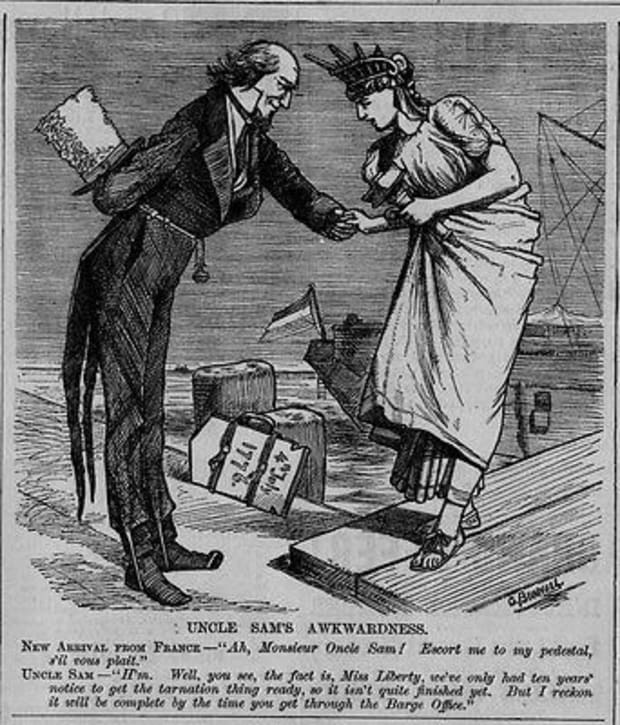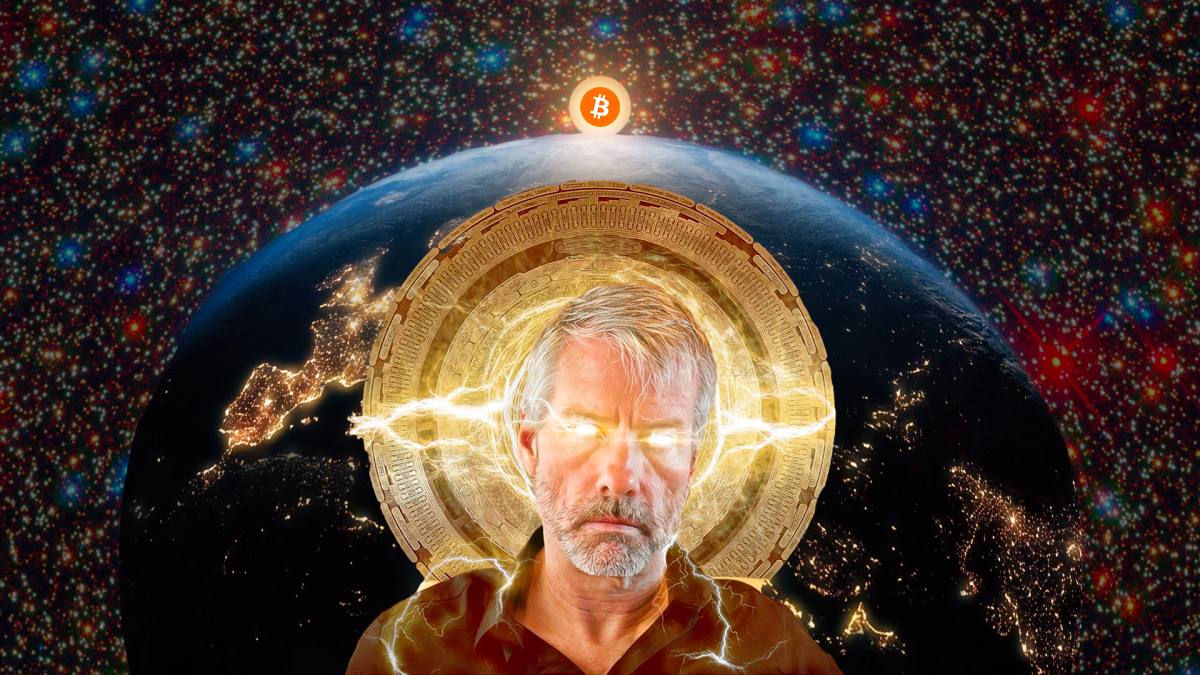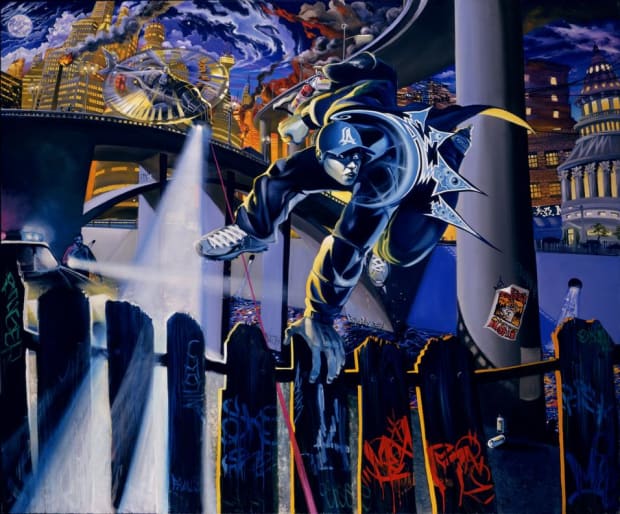Bitcoin Is Venice: A King Among Us
Like Bitcoin, the work of Dr. Martin Luther King Jr. offers an example of how to foster social networks, rather depend upon centralized powers.

This article is part of a series of adapted excerpts from “Bitcoin Is Venice” by Allen Farrington and Sacha Meyers, which is available for purchase on Bitcoin Magazine’s store now.
You can find the other articles in the series here.
“The scientific elite is not supposed to give orders. Yet there runs through all of them a clear notion that questions of policy can be made somewhat nonpartisan by the application of science. There seems little recognition that the contributions of social science to policy-making can never go beyond staff work. Policy can never be scientific, and any social scientist who has risen to an administrative position has learned this quickly enough. Opinion, values, and debate are the heart of policy, and while fact can narrow down the realm of debate, it can do no more.
“And what a terrible world it would be! Hell is no less hell for being antiseptic. In the 1984 of Big Brother, one would at least know who the enemy was — a bunch of bad men who wanted power because they liked power. But in the other kind of 1984 one would be disarmed for not knowing who the enemy was, and when a day of reckoning came the people on the other side of the table wouldn’t be Big Brother’s bad henchmen; they would be a mild-looking group of therapists who, like the Grand Inquisitor, would be doing what they did to help you.”
–William H. Whyte, “The Organization Man”
In “The Organization Man,” William Whyte makes the case that the bigness of the American corporation[i] creates all manner of subtle erosion of individualism and communitarianism alike, and instills a kind of pseudo-social isolation. One consequence is the rise of scientism, as described above, and ending on the startling invocation of Dostoyevsky.
While the inquisitor’s telling of Christianity is obviously false as a historical assessment, Dostoyevsky is cunning in making sure to have the inquisitor reveal himself and his philosophy to be explicitly anti-human. The inquisitor mocks Christ’s reverence for mankind, and even admits that what the Church ought to aspire to is a tyrannical regime purporting to represent God, but operated according to the principles of the Devil. In what is probably the extract’s most oft-cited moment, Christ, who has said nothing throughout as he is berated by the inquisitor, kisses him on the lips.
We would, in general, recommend exactly this treatment for any interactions with an aspiring totalitarian: Do not accept their premises, do not argue, and do not engage, because the offer of engagement is in fundamentally bad faith. It is not a conversation but an attempt to manipulate; you will get nowhere besides being deliberately confused, guilted and shamed. It is as likely as anything that the purpose of the exchange is not even to convince you of anything but to make an example of dissenters for whatever audience has been assembled. What you should do is what Dostoyevsky has Christ do: Demonstrate only that you recognize and value their agency as fellow human beings, then leave.
The totalitarian position may well be conceived as the point of the false binary of compromise and sacrifice such that neither voice nor exit are allowed, to borrow terms from Albert Hirschman’s classic of political economy, “Exit, Voice, and Loyalty.” As concisely as possible, and certainly to not do justice to a nuanced argument and fascinating book, Hirschman roughly means by “voice” something akin to “politics”: expression of opinion, debate, lobbying and social maneuvering as a decision-making procedure. By “exit” he simply means leaving, removing oneself from the organization in question which, depending on the type of organization in the first place may mean physically relocating or just rescinding membership. Of organizations that disallow either, Hirschman offers the following:
“There are probably no organizations that are wholly immune to either exit or voice on the part of their members. The ones that have been listed [in a table on the same page], in their intended structure, make no explicit or implicit allowance for either mechanism. Exit is here considered as treason and voice as mutiny. Such organizations are likely to be less viable, in the long run, than the others; exit and voice being illegal and severely penalized, they will be engaged in only when deterioration has reached so advanced a stage that recovery is no longer either possible or desirable. Moreover, at this stage, voice and exit will be undertaken with such strength that their effect will be destructive rather than reformist.”
We think Hirschman’s explanation here can readily be understood as implying that a totalitarian state will tend toward making bottom-up capital formation or accumulation impossible, be it economic, social or otherwise, spurring depreciation, and inducing an accelerated final collapse.
Importantly, it is much easier to destroy capital than to create it. Indeed, it is arguably much easier to destroy anything than to create it. Commitment to the project of civilization requires the restraint from the sheer thrill of destruction due to an intellectually-, morally- and spiritually-motivated recognition of its costs: Not just that something or other has been destroyed, but that the act of destruction makes is significantly less likely anything like it will ever be created again.
We have previously explained Hernando de Soto’s core thesis in “The Mystery Of Capital” that “free trade” cannot be imposed by fiat in an otherwise unfree society and be expected to produce economic miracles overnight. What is needed is functioning institutions of capital, which in turn, as described, require trust. Likewise, trust itself takes time to grow. It cannot be willed into existence by decree any more than yelling at a flower will make it blossom any faster. We would argue that even seemingly “economic” capitalism must be sense checked against the requisite social roots. In “The Shock Doctrine,” Naomi Klein criticizes the blatant sham of post-communist corruption in newly “capitalist” Russia, noting:
“Several of Yeltsin’s ministers transferred large sums of public money, which should have gone into the national bank or treasury, into private banks that had been hastily incorporated by oligarchs. The state then contracted with the same banks to run the privatization auctions for the oil fields and mines. The banks ran the auctions, but they also bid in them — and sure enough, the oligarch-owned banks decided to make themselves the proud new owners of the previously public assets.”
And there is nothing particularly special about Russia. Practically identical accounts could be given of fellow former Warsaw Pact nations such as Ukraine, Belarus, Bulgaria, Macedonia, Romania and Albania, now routinely cited as, collectively, by far the most corrupt nations in Europe, trailing only Russia as the undisputed and runaway leader. What is more interesting among formerly communist nations is arguably which do not suffer rampant corruption. The obvious examples are Lithuania, Latvia, Estonia and Poland, all of which are fascinating on account of their well-documented resistance to the capital-destructive force of communism.
The modern history of Eastern Europe is clearly an enormous topic in its own right to which we cannot do justice here. But the reader is encouraged to contemplate that likely the simplest explanation — while not at all exhaustive — of why the latterly-listed nations fared so differently to their peers — both under communism and after — is that they each had a far deeper stock of social capital in the form of disparate cultural identity, religion or both. Unlike their unfortunate neighbors, the populations of these nations were committed to nurturing and replenishing (if not quite growing) these stocks even and especially under active oppression and likely further penalty if caught. In the more unfortunate cases listed above, whatever social capital existed prior to communist annexation was decimated and has not returned, the void filled instead by mafiosi.
If less intrinsically violent, at-root similar follies are so commonplace in the West that we likely no longer pay much attention. Legal scholar and prolific political blogger Glenn Reynolds made the following astute observation in a 2010 post[ii] :
“The government decides to try to increase the middle class by subsidizing things that middle class people have: If middle-class people go to college and own homes, then surely if more people go to college and own homes, we’ll have more middle-class people. But homeownership and college aren’t causes of middle-class status, they’re markers for possessing the kinds of traits — self-discipline, the ability to defer gratification, etc. — that let you enter, and stay, in the middle class. Subsidizing the markers doesn’t produce the traits; if anything, it undermines them.”
What Reynolds identifies here is the effect of a top-down decree to skip to the reward of the nurture, replenishment and growth of social capital. Tragically, the effect is to undermine the process of ever hoping to generate this reward in a bottom-up manner — which is, of course, to say, sustainably. There is surely an uncomfortable similarity to the Russian corruption outlined by Klein. Indeed, this represents a kind of moral rather than legal or economic corruption; it is a high-modernist scheme to pretend to possess social capital. As Scott would say, to make it visually resemble what a stock of social capital would probably look like, rather than functionally. It derives from aesthetic knowledge, not practical. Practically, it will be little more than a cargo cult. When the unexplained, unexamined and misunderstood support for the scheme dries up, it will collapse.
Aleksandr Solzhenitsyn famously wrote that, “the line dividing good and evil cuts through the heart of every human being.” It may sound trite but it demands emphasis in understanding how what we call social capital can even exist in the first place: Human beings are intrinsically neither good nor bad. They have free will and they respond to incentives. Just as with humility and restraint, every major religion preaches a variation of this fundamental tenet, and with strikingly good reason.
The most tragically simple way to make a human being behave selfishly is to destroy their incentives not to be selfish in the first place. And the simplest way to do this is to manipulate their environment and circumstances such that they can or must only think over short periods of time and without reference to the people and institutions that comprise their actual surroundings.
An obvious conception of what it means to have a low time preference is precisely to think beyond not just the current moment, but to think beyond oneself, to care about forms of gratification beyond the immediate and the biological, and that are rooted in an embrace of community and the fundamental compromise it entails. This is precisely the invitation of Abrahamic religion calling for charity and rejecting interest.
Abstaining from, for example, sex, drugs, alcohol, and the like, and committing one’s time toward the more intangible and the more abstract, makes one vulnerable, because while the experience of a flow can be captured in the past and never taken away, stocks point to the potential of the future, and hence can always be destroyed. The very existence of stocks of any kind and of any value embodies restraint; restraint implies selflessness and humility; and selflessness and humility are the essence of low time preference.
In contrast to the degenerate fiat trope of homo economicus, it is natural for human beings to want to help one another, but only provided they are first assured of their own safety and sustenance. We can call this “selfishness” if we want to, but doing so is hardly helpful — it is biological reality. It was a trope in the Soviet Union that the women who worked in grocers and food facilities would go to work skinny and leave work fat, by stuffing their clothes with whatever they could get their hands on, lest they and their families starve on government rations.
The tragic irony of the totalitarian deceit is that the epidemic of widespread and unchecked selfishness against which the lying totalitarian proselytizes is unlikely to exist in any circumstances other than the deprivation caused by totalitarianism itself. Wealth comes from capital. The destruction of capital, whether from total coercion or total isolation, will lead to poverty one way or another.
It is only when personal sacrifice and interpersonal compromise are pushed so far as cooperation remains voluntary and consensus remains honest; when society is structured neither as atomized individuals nor as homogenized tyranny, but as bottom-up, dynamic community; when the state cedes authority and autonomy to organic and voluntary social institutions, that fruitful capital formation will take place, and from which prosperity has a chance of following.
Thomas Paine may well have put all this best in any written English, opening his polemical masterpiece “Common Sense” with the proclamation:
“Some writers have so confounded society with government, as to leave little or no distinction between them; whereas they are not only different, but have different origins. Society is produced by our wants, and government by our wickedness; the former promotes our happiness positively by uniting our affections, the latter negatively by restraining our vices. The one encourages intercourse, the other creates distinctions. The first a patron, the last a punisher.
“Society in every state is a blessing, but government even in its best state is but a necessary evil; in its worst state an intolerable one; for when we suffer, or are exposed to the same miseries by a government, which we might expect in a country without government, our calamity is heightened by reflecting that we furnish the means by which we suffer. Government, like dress, is the badge of lost innocence; the palaces of kings are built on the ruins of the bowers of paradise. For were the impulses of conscience clear, uniform, and irresistibly obeyed, man would need no other lawgiver; but that not being the case, he finds it necessary to surrender up a part of his property to furnish means for the protection of the rest; and this he is induced to do by the same prudence which in every other case advises him out of two evils to choose the least. Wherefore, security being the true design and end of government, it unanswerably follows that whatever form thereof appears most likely to ensure it to us, with the least expense and greatest benefit, is preferable to all others.”
The state may plan, but the nation builds. People form a nation. Rulers form a state. The nation is common but private. It is a network owned and controlled in constituent parts by individuals, resting on the consensual adoption of values. We turn one final time to Ernest Renan for a moving description of the nation from “What Is A Nation?”:
“A nation is a soul, a spiritual principle. Two things which, properly speaking, are really one and the same constitute this soul, this spiritual principle. One is the past, the other is the present. One is the possession in common of a rich legacy of memories; the other is present consent, the desire to live together, the desire to continue to invest in the heritage that we have jointly received. Messieurs, man does not improvise. The nation, like the individual, is the outcome of a long past of efforts, sacrifices, and devotions. Of all cults, that of the ancestors is the most legitimate: our ancestors have made us what we are. A heroic past with great men and glory (I mean true glory) is the social capital upon which the national idea rests. These are the essential conditions of being a people: having common glories in the past and a will to continue them in the present; having made great things together and wishing to make them again. One loves in proportion to the sacrifices that one has committed and the troubles that one has suffered. One loves the house that one has built and that one passes on. The Spartan chant, ‘We are what you were; we will be what you are,’ is, in its simplicity, the abridged hymn of every fatherland.”
Those individual social capitalists who nurture, replenish and grow social networks by nourishing them with acts and ideas that other participants choose to adopt are the heroes that feed our collective imagination. These contributions sustain communities, tribes, cities, and, ultimately, nations so that they can foster trust within themselves, can communicate, and can cooperate.
It is difficult to think of a greater hero in this respect than the Reverend Martin Luther King Jr., or a greater contributor to advocacy for the fostering of trust in a community or a nation, given few examples so clearly illustrate the willful destruction of social connections as segregation. By cordoning black Americans from all others, the United States for nearly 100 years following the abolition of slavery still sustained two separate and unequal social networks.
“Unequal” because the value of networks grows at a rate proportional to the value of its accumulated stock, social, economic or otherwise. Since black Americans were only ever around 10% of the population, and controlled a minuscule proportion of the total economic productive and financial capital, their capital stock was relegated to a much smaller network that was furthermore kept poor through coercion.[ii]
In addition to this obvious moral tragedy and injustice, it is worth noting that the two disconnected networks were hence less valuable than an integrated network would have been. The extreme difficulty in generating bottom-up social capital caused racial tension and animosity, while top-down racist policymaking hindered the organic development of social capital by nipping interactions in the bud. King experienced this reality firsthand:
“From about the age of three…I had had a white playmate who was about my age. We always felt free to play our childhood games together. He did not live in our community, but he was usually around every day until about 6:00; his father owned a store just across the streets from our home. At the age of six we both entered school—separate schools of course. I remember how our friendship began to break as soon as we entered school, of course this was not my desire but his.”
King also added:
“If it had been possible to give Negro children the same number of schools proportionately and the same type of buildings as white children, the Negro children would have still confronted inequality in the sense that they would not have had the opportunity of communicating with all children… The doctrine of separate but equal can never be.”
There was little “goodwill, fellowship, mutual sympathy and social interaction” as L.J. Hanifan described it. Individual initiative was often aborted by social pressures. This is the milieu King was reared in and sought to change. His life’s work would be to mend the social fracture that had plagued America since its birth. In true capitalist fashion, his action was bottom-up and only political in the sense that by mobilizing thousands and convincing millions his message reached the capital’s marble halls. King would almost certainly not have described himself this way, once saying, “I do recall, when I was about five years of age, how I questioned my parents about the numerous people standing in breadlines. I can see the effects of this early childhood experience on my present anticapitalistic feelings.”
But again, we attribute this to the effect on the public consciousness of the perverse success of the legacy of contemporary academic economics, combined, of course, with the casual tolerance of blatant institutional racism simultaneously present and normalized in the governing class. By his “anticapitalistic feelings,” King clearly means the atrocious combination of top-down economic planning, state sanctioned racism, and high time-preference atomic individualism altogether slapped with the label “capitalism,” although we would argue it was nothing of the kind.
Years before King’s march on Washington, it was through local and often economic pressures that he won his first victories. The Montgomery bus boycott used the immediacy of marketplace feedback to demonstrate to operators that segregation was unacceptable to its customers. During the Birmingham campaign, pressure was put on segregated businesses to serve people equally irrespective of the color of their skin. King and the broader Civil Rights movement understood that boycotts created an immediate feedback loop that reverberated up the social and economic power structures. Money incentivized people to change and cooperate. It forced a reckoning with what consensuses were and were acceptable: What interpersonal compromise and personal sacrifice was just, as opposed to tyrannical.
At the core of King’s message stood Christian love, asking the oppressed to see their oppressors as brothers in Christ and collectively turn the other cheek. Instead of violence begetting more violence, the Civil Rights movement respected the most fundamental expression of the agency of others: their thoughts. Change would not be imposed on the reluctant. It would first be realized in hearts and in minds, changed by action. Every black person walking to work instead of taking a segregated bus or ordering food in a segregated diner contributed to healing the racial divide. King’s method of nonviolent resistance built local, then national support. Far beyond “raising awareness,” the movement changed people’s opinions and, in doing so, built social capital. The focus was on humanizing the oppressed and planting a seed of empathy in the oppressor — a tactic entirely, deliberately adapted from the abolitionist movement over 100 years earlier. King opposed both racists, who wanted to keep people apart, and black separatists, who looked to only to build social capital within their community. King’s third way was reconciliation. It went against the natural survival instinct of fighting fire with fire. He fought destruction with creation; he called for true pacifism:
“True pacifism is a courageous confrontation of evil by the power of love, in the faith that it is better to be the recipient of violence than the inflictor of it, since the latter only multiplies the existence of violence and bitterness in the universe, while the former may develop a sense of shame in the opponent, and thereby bring about a transformation and change of heart.”
Further, King explained:
“Our ultimate aim is not to defeat or humiliate the white man but to win his friendship and understanding. We have a moral obligation to remind him that segregation is wrong. Let us protest with the ultimate aim of being reconciled with our white brothers.”
The Reverend Martin Luther King Jr. never failed to remind Americans of their shared experience. His was a revolutionary message similar to that of the Founding Fathers. It did not call on ethereal and new ideas born from the minds of intellectuals and decreed from on high. It was anchored in old traditions and beliefs. The Founders appealed to God’s natural law and rights earned from the King. Martin Luther King Jr. appealed to the founding American promise:
“And so even though we face the difficulties of today and tomorrow, I still have a dream. It is a dream deeply rooted in the American dream.
I have a dream that one day this nation will rise up and live out the true meaning of its creed: ‘We hold these truths to be self-evident, that all men are created equal.’”
We have quoted extensively in this section. Perhaps because our words feel meek in comparison to King’s. We will close with his words, one last time, on the very essence of social capital, for King himself was undoubtedly a great social capitalist. In the end, it all comes down to understanding the other as like ourselves: not identical, nor incompatible. Similar but different. Fellow humans, with different experiences, different knowledge, and different but worthwhile agency. In a word, as peers:
“One day a man came to Jesus and he wanted to raise some questions about some vital matters of life. At points he wanted to trick Jesus, and show him that he knew a little more than Jesus knew and throw him off base. Now that question could have easily ended up in a philosophical and theological debate. But Jesus immediately pulled that question from midair and placed it on a dangerous curve between Jerusalem and Jericho. And he talked about a certain man who fell among thieves. You remember that a Levite and a priest passed by on the other side — they didn’t stop to help him. Finally, a man of another race came by. He got down from his beast, decided not to be compassionate by proxy. But he got down with him, administered first aid, and helped the man in need. Jesus ends up saying this was the good man, this was the great man, because he had the capacity to project the ‘I’ into the ‘thou’ and to be concerned about his brother.”
–Martin Luther King Jr.
[i] He doesn’t say “toxic bigness” but then his is a kind of anthropological study, not so arrogantly sweeping as our own finance-oriented theory of everything. [ii] Of even more insidious varieties in addition to those commonly cited in terms of physical intimidation, one example of which only fairly recently starting to receive mainstream attention being “redlining.” This is the practice of enforcing, centrally and by fiat, worse terms for credit on collateralized properties in neighborhoods known full well to be majority black. The effect (almost certainly bigoted and intentional) was to prevent black Americans from even beginning to accumulate capital. For an excellent popular account of emerging evidence of the extent of this injustice, see Whet Moser, “How Redlining Segregated Chicago and America,” Chicago, August 22, 2017.
This is a guest post by Allen Farrington and Sacha Meyers. Opinions expressed are entirely their own and do not necessarily reflect those of BTC Inc or Bitcoin Magazine.


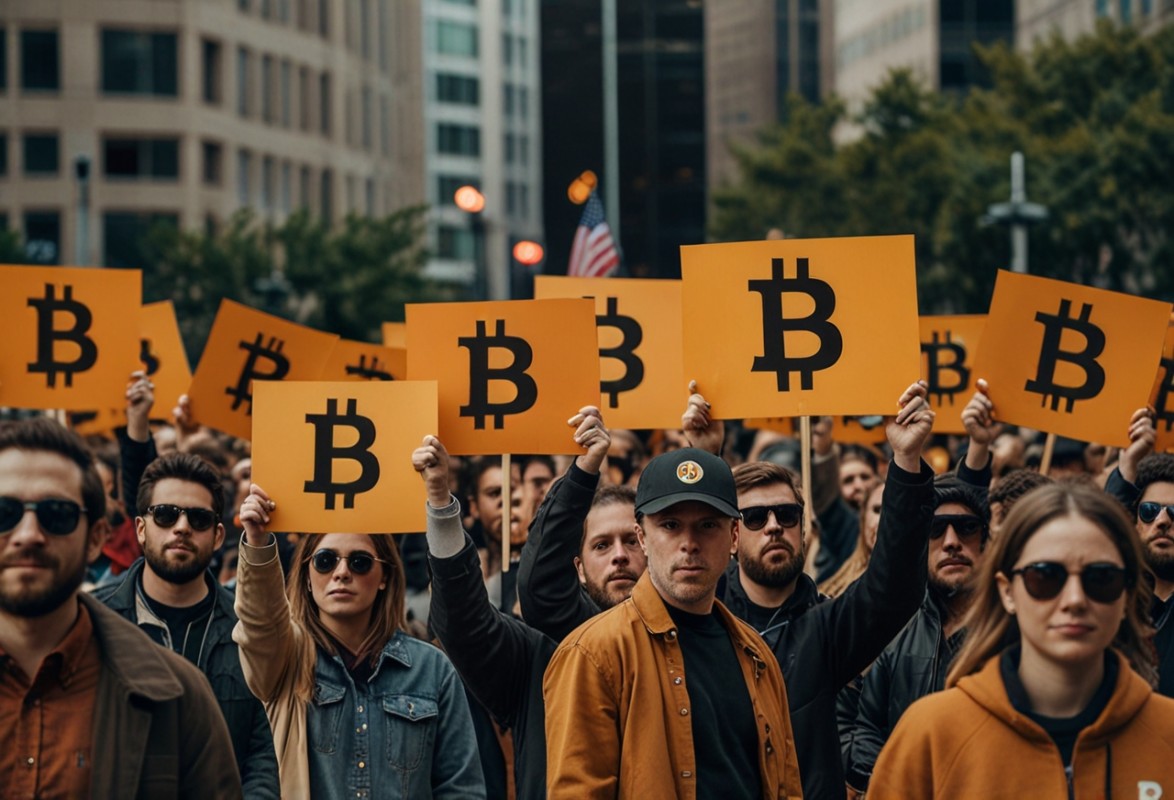
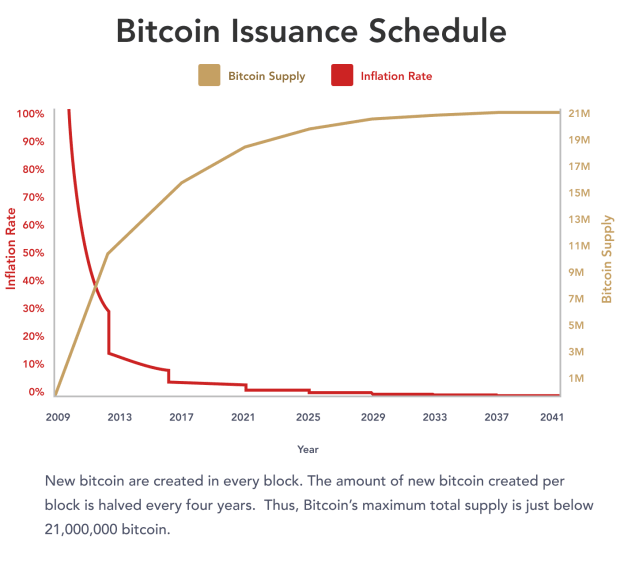
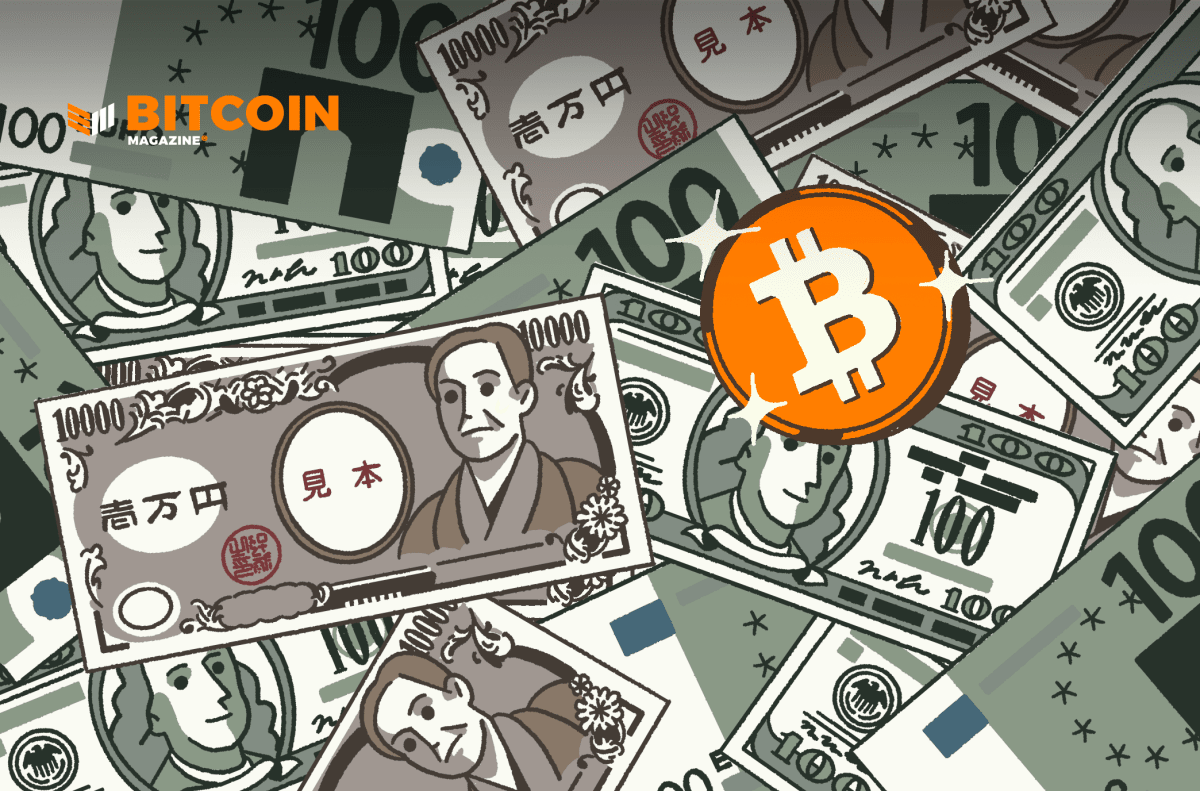
![Another Cryptocurrency Exchange Hack Hits Japan [UPDATED]](https://www.lastcryptocurrency.com/wp-content/uploads/2018/09/4548/another-cryptocurrency-exchange-hack-hits-japan-updated.jpg)
